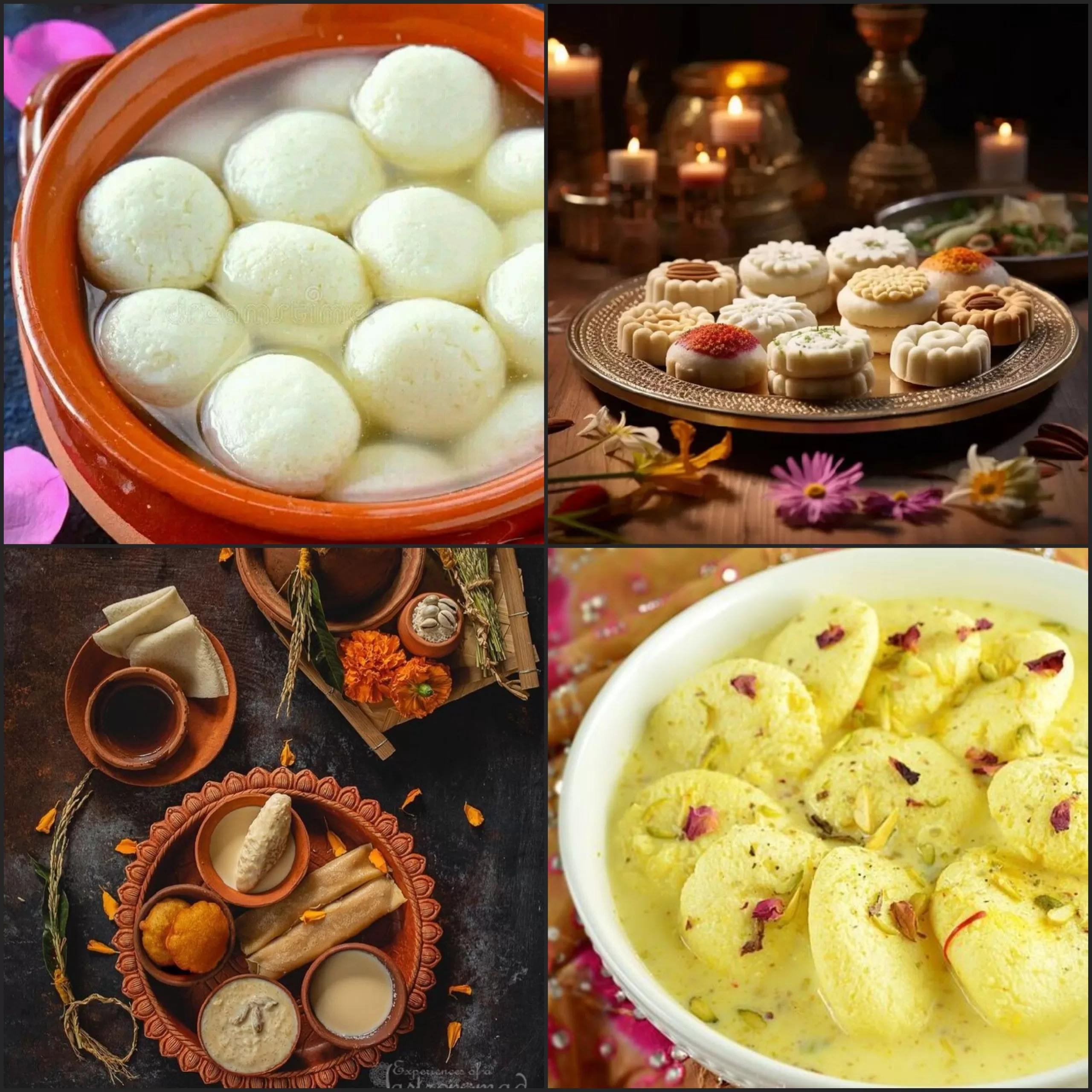
Ancient Roots and Regional Influences
In West Bengal, sweets are more than just desserts, they are an integral part of it’s cultural heritage. As the saying goes, “Mistir kotha bolte gele, pran to jabe” (মিষ্টির কথা বলতে গেলে প্রাণ তো যাবে), this translates to “To talk about sweets is to give one’s life” and reflects the deep affection Bengalis have for their sweets.
Historically, it can be presumed that sweets in West Bengal existed right from the days of several kingdoms and empires ruling over the region. According to the historical records of Bengal and popular literature of that period, most ld the sweets existed right from the medieval period. Products like sugarcane, jaggery and honey were added to make the sweets and also they were then added to different locally available fruits, nuts and spices to make different kinds of sweets.
Interestingly, it is widely evident that the sweet cuisine of Bengal has been massively influenced by the Persian as well as Mughal food cultures. Gradually with the help of refined sugar and new approaches to cooking that appeared in the Mughal era, unique kinds of sweets could be created. This can be considered as the transition to a new era in the history of Bengali sweets when they started to become famous not only for their taste but also for their appearance.
The Evolution of some of the well-known Bengali Sweets
During the 19th and 20th Centuries, the of recipe of sweets started to evolve in Bengal. They introduced new products and different kinds of mix and match methods to prepare sweets. Some of the most iconic sweets that emerged during this period include:
1. Rasgulla (Rosgolla): Oftenly referred to as the king of sweets Rasgulla is a core part of Bengali cuisine. This sweet dish was perhaps invented in the last quarter of the nineteenth century. It is widely believed that the sweet has been prepared in 1860 by a confectioner named Nobin Chandra Das located in Kolkata. Rasgulla is soft, spongy ball dipped in syrup and prepared out of chenna which is cottage cheese but is quite famous for its mild sweet taste.
2. Sandesh: Sandesh is another Bengal’s native delicacy sweet, which clearly depicts the basic but beautiful bengali dessert. Sandesh originated from Bengal and is prepared from fresh chenna and scented with crushed cardamom or saffron and is as soft as a cloud. The sweet has been an integral part of Bengali meal plan for ages and is preferred especially during puja and festivity.
3. Pithas: Pithas are a range of sweets originally from Bengal made from rice flour or lentil flour. They are usually packed with either boiled and sweatened coconut, jaggery or khoya which is dried milk. Some popular types are Chitki Pitha prepared from rice flour and jaggery and made in sweet round balls and Bhapa Pitha which is prepared from rice and stuffed with coconut filling and steamed. Particularly, pithas are preferred during winters and they are prepared during the festival like Poush Sankranti which is a harvest festival.
4. Khirer Mishti: This sweet which is prepared and consumed during particular religious ceremonies involves the use of rice and milk to prepare it and is a sweet dish. At times, it is even offered with the taste of cardamom, saffron, and dry fruits making it all richer in taste. Regarding the tradition of preparing Khirer Mishti, it can be mentioned that like most Bengali sweets, it has its origin in the heritage of traditional festivals where several sweet dishes are offered.
Festivals and Celebrations
Sweet items in particular, if being related in West Bengal, are not simply elaborate meal items, but a strong component of societal and spiritual rituals. Sweets are a major part of festivals such as Durga Puja, Diwali, Pohela Boishakh (Bengali New Year), Lakshmi Puja etc. For instance, during Durga Puja one can find a number of sweets including the most typical Kachori and Samosa prepared and offered to the goddess. The sweet exchange during festivals depicts happiness, prosperity at the same time signifies unity among the Bengalis.
Innovations in the Present Day World and International Acclaim
Today, the tradition of sweet making amongst the Bengal people has prevailed and yet developed so much that in this era, chefs and bakers have tried their new creativity by including new tastes, products and arrangements in sweets. New items, fusion sweets like Bengali ice creams, desserts with fusion out of global flavours, signify versatility and experimentalism which is part of Bengali Palate.
Rasgulla and Sandesh are no more restricted to the local Bengalis; they have found favour with the international markets. Subsequent to that, the GI tag to Rasgulla in 2017 only marked its claim on the global culinary map but also local pride and history of Bengali sweets.
Conclusion
The example of sweet in West Bengal can actually describe the characterization of the food culture of that region as well as their capacity to transform themselves along the emerging trend and popularization, but still maintaining their identity. Bengali sweets are a universal delight that retain the feeling of a holiday. More and more, sweet making goes on, but it still forms a part of the West Bengal’s cultural icon and most importantly, a glorious culinary history.






